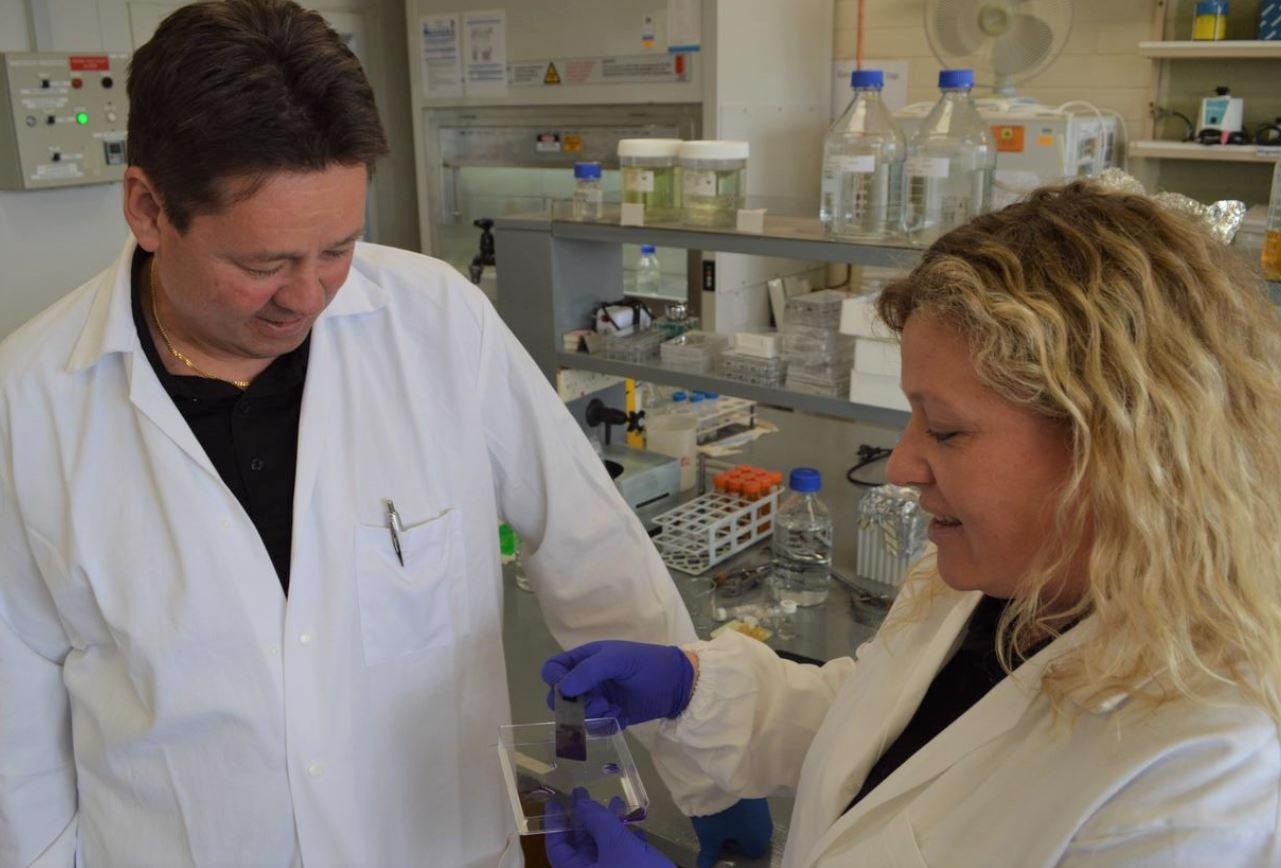Dec 17 2020
Nanoscale changes to industrial coatings can make them stronger, more environmentally friendly and better biosecurity barriers to block marine pest invasions of ports and coastlines.
 Mats Andersson and Sophie Leterme
Mats Andersson and Sophie Leterme
It’s estimated the economic and environmental cost of biofouling runs to billions of dollars in eradication efforts around the world.
Now a new $445,000 Australian Research Council (ARC) Discovery Project (DP210101243) led by Flinders University College of Science and Engineering experts will expand research into finding better coatings for the control and eradication of unwanted marine biofilms.
Flinders University Professor Mats Andersson and Associate Professor Sophie Leterme will collaborate with co-investigators Associate Professor Christine Bressy and Associate Professor Jean-François Briand from the Laboratoire MAPIEM, University of Toulon, France where research efforts to develop a new generation of antifouling coatings is well under way.
“Unwanted biofilms grow on all surfaces and marine environments and they can lead to invasive pests and other environmental problems and costly eradication efforts,” says Professor Andersson.
“This project aims to develop novel electrically conducting carbon-based paints that are stable in marine environments, and at the same time green solutions for controlling the biofouling of surfaces immersed in our oceans.”
For the first time, the ARC Discovery Project will measure the effectiveness of this electrochemically generated redox stress and shear properties in new novel carbon-based paints, and how marine biofilms respond to them.
“This is an important new field of science that will create better and environmentally important solutions to many shipping and marine pollution and biosecurity issues that will help build a better future for our oceans,” says Associate Professor Leterme, director of the Biofilm Research Innovation Consortium at Flinders University, which is also looking at other environmental, industrial and medical biofilms.
“We are working with industries to develop innovative solutions that meet their needs and alleviate their biofilm related problems.”
“Our aim is to better understand the initial stages of development of marine biofilms and the interactions between microbial cells and these surfaces,” Associate Professor Leterme says.
Biofilms are 3D structures, made of a combination of different microbial species embedded within a protective extracellular polymeric substances matrix – a highly effective survival strategy and protection means against biocides, antifungal and antibacterial treatments.
The biofilm research consortium at Finders has also worked on developing antimicrobial nanoparticle coatings for evaporative cooler pads and novel coatings to prevent biological growth in seawater.
Associate Professor Leterme has previously researched the impact of microbial communities in the biofouling of desalination plants.
Within minutes of immersion of a surface into seawater, eDNA, proteins, polysaccharides and microbial cells attach and develop a biofilm. This biofilm can lead to the attachment of macro-organisms such as barnacles and mussels but can also cause the deterioration of the immersed surface via corrosion.
“The hull of a ship is a perfect home for marine species such as algae and barnacles. This fouling can slow down ships, increase fuel consumption and reduce ship durability,” adds organic chemist Professor Andersson, from the Institute of Nanoscale Science and Technology at Flinders University.
“Our research is focuses on taking up copper in seawater and managing its release to eliminate fouling,” he says.